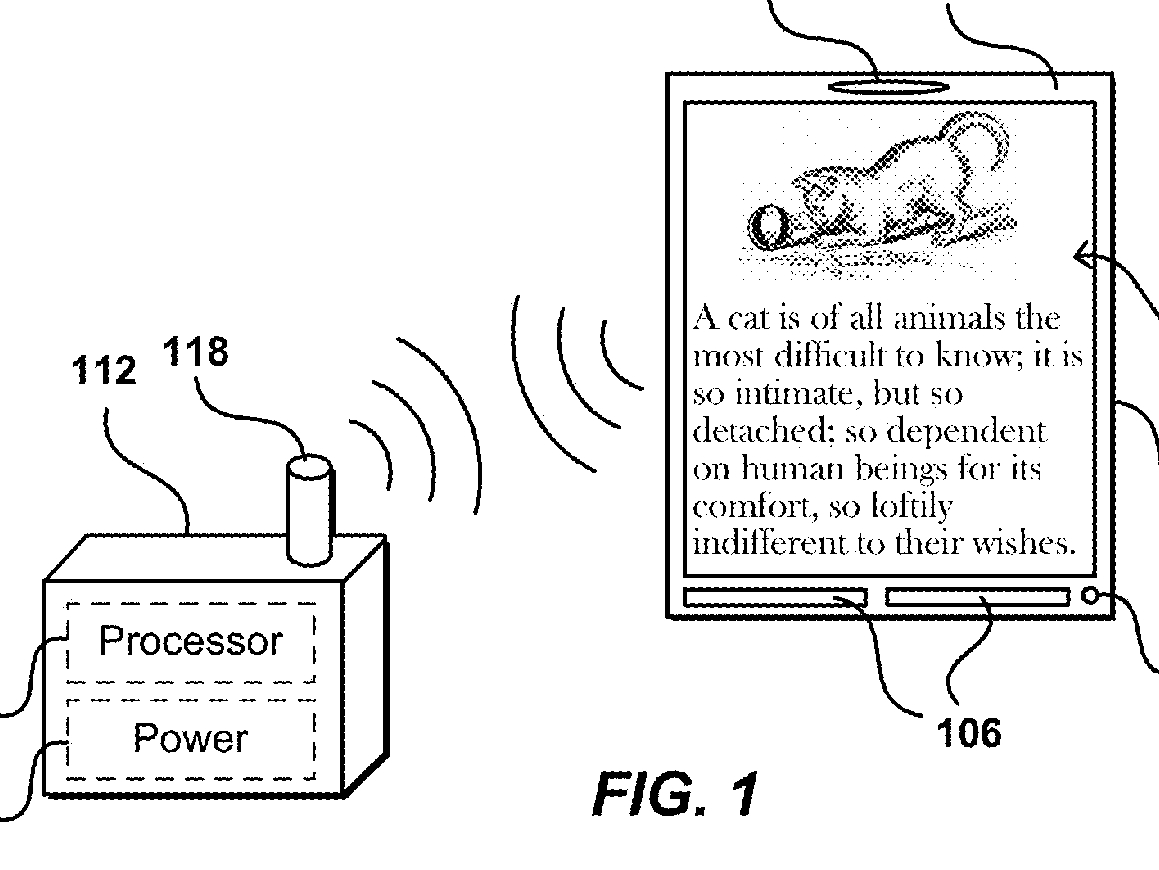Amazon Patent Describes Wirelessly Powered Remote Displays
GeekWire has discovered a patent filed by Amazon CEO Jeff Bezos and Vice President Greg Hart that describes remote screens, or rather, devices that are mere screens relying on the cloud to produce content and power. These screens only need enough hardware to light the displays, receive the content and produce audio if needed.
According to the patent, Amazon's remote screens wirelessly connect to a base station that handles all the "behind the scenes" work like receiving content from the cloud and transferring it to the screens, processing gesture input and voice commands, storing data and more. The base station also wirelessly sends power across its network, keeping battery requirements at a minimum, if at all.
"Similar to Wi-Fi services today that require a fee to access, users could be charged an access or usage fee to utilize the system including usage of the wirelessly transmitted power," the patent states. "[A] rechargeable battery may however provide additional benefits."
As an example, several stations could be established throughout a college campus. The screens, distributed to students, would receive both data and power without the need for any cables. In turn, students wouldn't need to carry around volumes of text books for each class, but instead load books up on the electronic screen similar to the way we open ebooks on tablets.
In one diagram, the screen is labeled as a portable display, which consists of the screen itself and the tablet-like chassis. Possible solutions include an electrophoretic display, a cholesteric display, a liquid crystal display (LCD), and a light emitting diode (LED) display, as well as a combination of one or more displays. The screen may also be touch-based, possibly eliminating the need for buttons.
The primary station will consist of a power source, a processor and an antenna. The power aspect may be comprised of an electrical power cord that plugs into an electrical outlet, a battery, or any other combination of power components. The processor may contain more than one core, and more than one graphics core.
"[The] antenna is not required for primary station to wirelessly transmit power or data to a portable display," the patent states. Later on it talks about displays that are mounted on car windshields and thin displays that could adhere to glasses.
Get Tom's Hardware's best news and in-depth reviews, straight to your inbox.
To read the full patent, head here.

Kevin Parrish has over a decade of experience as a writer, editor, and product tester. His work focused on computer hardware, networking equipment, smartphones, tablets, gaming consoles, and other internet-connected devices. His work has appeared in Tom's Hardware, Tom's Guide, Maximum PC, Digital Trends, Android Authority, How-To Geek, Lifewire, and others.
-
kornelix This patent is crazy. It is an attempt to own a generic concept with no particular hardware design or methods. I could just as well patent a rocket that can fly to the stars.Reply -
InvalidError If you want to transmit enough power to "light" the screen as in drive either a backlight or OLED, your wireless power station would need to pump out some rather serious power... if you want 100mW to reach the device, you will likely need to transmit over 10W due to spatial dispersion. Imagine what people who are worried about WiFi's ~100mW would say about that.Reply
Wireless power is extremely inefficient without use of tightly collimated beams... and tightly collimated beams would be much less convenient than cables due to the need for lined-up directional antennas. -
GreaseMonkey_62 Reply
In addition to people's fear of that much power being pumped wirelessly, the whole thing seems rather impractical.10700960 said:If you want to transmit enough power to "light" the screen as in drive either a backlight or OLED, your wireless power station would need to pump out some rather serious power... if you want 100mW to reach the device, you will likely need to transmit over 10W due to spatial dispersion. Imagine what people who are worried about WiFi's ~100mW would say about that.
Wireless power is extremely inefficient without use of tightly collimated beams... and tightly collimated beams would be much less convenient than cables due to the need for lined-up directional antennas.
